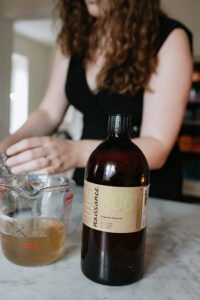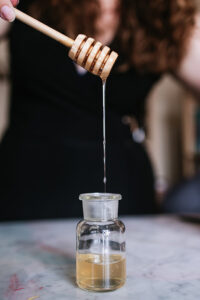
What makes a paint?
Having a history in traditional media, I was perhaps a little naive when I first started. I instantly went and bought lots of student-grade paint, which while nice, were underwhelming. I didn’t get the same beautiful transparency that I saw in others’ artwork. Thus started me down the YouTube whirlwind…
A few months later, and I invested in my first professional watercolours. Boy, did I notice the difference!
Since then, I have delved into the topic, finding out what exactly is the difference between student and artist grade watercolours. Furthermore, I’ll tell you how these differences affect your art!
Pigment
Pigment is the constant of any paint; whether it be oil, acrylic, or watercolour. Watercolour paint comprises of 10-50% pigment, depending on the particle size.
Smaller pigment particles have a larger surface area compared to the overall volume. As there is a larger surface area, there is more colour visible, and a higher colour payoff. Furthermore, per gram, there are more particles of pigment, and thus we require more vehicle to disperce the pigment evenly. This can lead to 90% vehicle present in paints containing quinacridones and phthalos, whereas is may only be 50% for pigments with larger particles such as ultramarines, cobalts, and cadmiums.

Vehicle
This makes up the rest of the paint, and is made up of the following.
Binder

In watercolours, this usually gum arabic, however student or craft paints might also use dextrin, and will comprise the majority of the vehicle.
Gum arabic is the hardened sap from acacia trees, and can be further known by the locations and species of tree, including sudan, kordofan, and senegal.
A very basic recipe for watercolours only requires gum arabic (dissolved in water), and pigment. However, this will not give you the nicest paint to use; instead, you might find you have crumbling blocks of paintdust…
Plasticiser
How do we combat this? Well, through the use of plasticisers and humectants.
Plasticisers slow down the drying time of watercolours, and aid in keeping the dry cakes more supple.
On a molecular level, plasticisers act as a lubricant between the binder and pigment particles, allowing them to move more freely; this is why the paints rewet more readily. There is a lower barrier to get from the dry cake to the desired consistency.
The most common plasticiser is glycerin, however, methylcellulose can also be used.

Humectant

Rewettability is the mission of humectants. Both honey and corn syrup absorb water in the atmosphere, making it easier to reactivate our paints. Whilst honey is more absorbent than corn syrup, the latter is considerably cheaper, so naturally, it is used more in lower-grade paints.
If honey is present in the paint, it cannot be considered vegan, so that is something to look into if it affects you. Brands such as Sennelier and M. Graham are renown for their honey content (and are super easy to rewet as a result)
It is worth noting that humectants are also known to increase the staining of paints – so watch out if you’re using quinacridones!
Manufacturing Aids
These include…
1. Wetting agents. Oxgall or alcohol improve the initial mixing of the pigment and vehicle by disolving the pigment into the aqueous (water) layer. Many companies (such as Qor) have synthetic alternatives that they use, however the effects of these dispersants are seen even after the paint is made; often the pigment will shoot across the page, when laid in wet-on-wet.
This can be a beautiful effect, but if you want more control of your paint, it is best to test out how colours behave before committing them to your art. Check out this article for ways to test your paint.
2. Preservatives. These are essential in tube paints, to prevent moulding in the wet paint.
Fillers
Fillers… there are reasonas these are used in paints.
- Improve the consistency of paints, and to make them homogenous across a range of paints.
- Reduce bronzing in paints which require a high vehicle loading.
- Reduce the tinting strength of overpowering pigments.
- ... to bulk out pigments, and save money.
It isn’t necessarily a bad thing to use a filler in paints, however I feel that transparency is best; if there is a genuine reason to use the filler, then customers will understand. If it is just to save money, then customers should also be aware of this when they buy their paints.
Brighteners work in a similar fashion, increasing the chroma and value of paints.
Keep your eyes out for another blog post talking about the issue of fillers.
Enjoy your painting, and I’ll see you soon 🙂
Kate x
